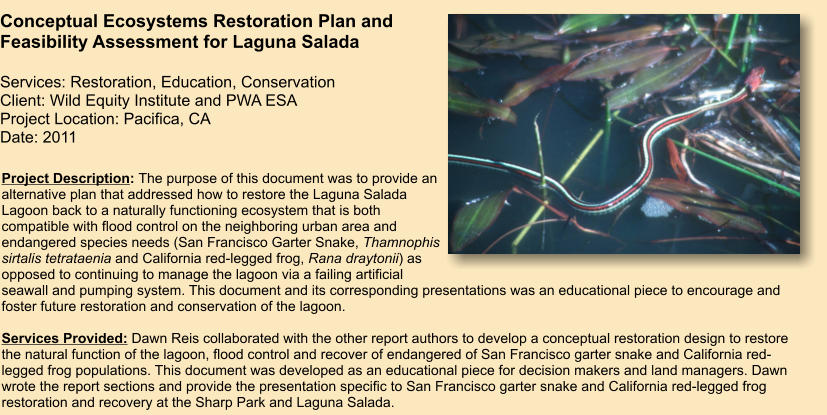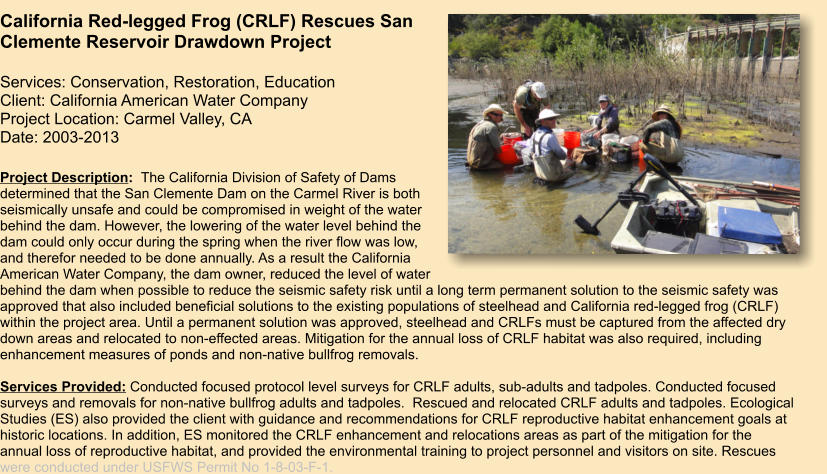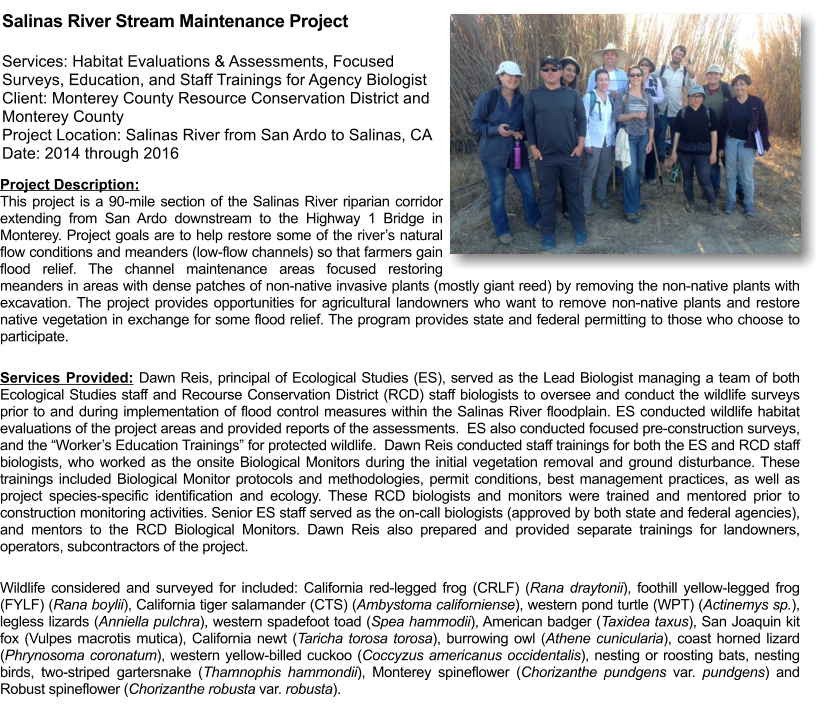
© Dawn Reis Ecological Studies. All Rights Reserved.
Representative Projects

























Project Description: The California-American Water Company draws
water from the Carmel River Alluvial Aquifer to supply its customers.
This results in the drying of portions of the river channel and the
associated off channel wetland areas that are required by California
red-legged frog (Rana aurora draytonii) as reproductive habitat. In
order to reduce the possibility of “take” of California red-legged frog
reproduction, the Carmel River is surveyed for potential tadpole habitat and actual California red-legged frog reproduction.
Services Provided: Each year the Ecological Studies conducts Habitat Typing of 18 miles of river for CRLF tadpoles, monitored
tadpole locations, and conducted tadpole rescues. All tadpoles that are in danger are captured and to safe areas. Part of a
conservation effort to aid CRLF tadpoles in the project area included developing a rearing facility to grow out some of tadpoles
rescued on the river. The objective was to provide some predator free areas were tadpoles known to mature and metamorphose
before returning them back to the river in areas with year round flow. Rescues were conducted under USFWS Permit No 1-8-99-
FW-7 and later the rescues and rearing was conducted under Dawn Reis’ 10(a)(1)(A) Permit No. TE-057714-0.

California Red-legged Frog (CRLF) Tadpole
Rescues for the Carmel River Operations Project
Services: Conservation
Client: California American Water Company
Project Location: Carmel Valley, CA
Date: 2003 through 2014











- Carmel River Dam & Reservoir Project
- How to conduct a Biological Assessment
- Whisler/Wilson Biological Assessment
- General Jim Moore Blvd. Improvement Project
- Big Dipper Ranch Management Plan
- Carmel River Lagoon Enhancement
- Triple M Ranch Restoration Design
- Triple M Ranch Biological Assessment
- Laguna Salada Restoration Plan
- Food Safety Risks Central CA Agriculture
- San Clemente Dam Drawdown
- Carmel River Reroute & Dam Removal
- Carmel River Operations
- Salinas Watershed Invasive Non-Native Plant Control
- Salinas River Maintenance Project
- Little Arthur Creek Storage and Forbearance
- CRRDR Post-construction Monitoring Plan















